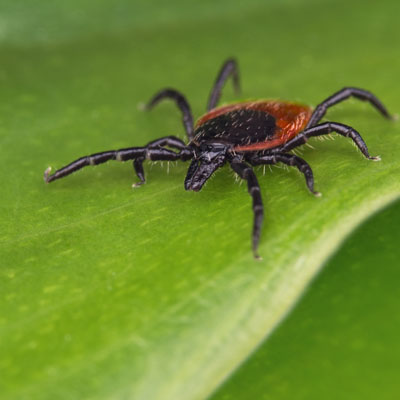 3 Common Winter Ticks: Identification and Protection
3 Common Winter Ticks: Identification and Protection
Contrary to popular belief, ticks are still active during the winter months, and they still pose a threat to you, your family, and your pets. Knowing how to identify and protect against them is critical during this time of year. That’s why we’re here to help! Here are three common winter ticks, and what you need to know about protecting yourself, and your loved ones from them.
Blacklegged Tick, Also Known As Deer Tick (Ixodes Scapularis)
Of all the active winter ticks, the black-legged is the most active, and most common. This is because their eggs hatch in the spring. They feed and grow in the summer and fall, and they grow into full adults at the end of fall/early winter. Once fully developed, they become extremely aggressive. They are looking for a blood meal to thrive, survive, and ultimately breed come spring.
Adult black-legged ticks are small, about 1/8th of an inch long. They are a reddish/brown color, and their long, narrow mouthpart is visible if you’re looking directly above it. They are most commonly found in wooded areas, in bushes and trees around trails.
If you are walking on a trail, or in a wooded area, it is best to wear long pants, long sleeved shirt, and close-toed shoes. Also, once you get home, check for ticks once and then check again. Lastly, always make sure to inspect your pets when they come inside from being outside.

Brown Dog Tick (Rhipicephalus sanguineus)
The brown dog tick rarely bites humans but is a threat to dogs and cats in the winter. Its life cycle allows it to survive outside and inside, so if you’re not careful to inspect your dogs and cats regularly, they can infest your home.
The brown dog tick is similar in size as the black-legged tick. But it is oval in shape and has a thicker mouthpart than most other ticks. As previously mentioned, the best way to protect against the brown dog tick is to inspect your pets every time they come inside. This tick is most commonly found around your pet’s ears, or in between their toes.
Winter Tick (Dermacentor albipictus)
Also not a threat to humans, winter ticks can be an incidental threat to dogs and cats (although their ideal host is on much bigger animals like deer or horses). The winter tick is most commonly found in deep areas of the forest and is commonly seen by campers and hunters.
They are slightly larger than the black-legged tick. The males are 1/4th of an inch, while the females can be 3/4th of an inch. They’re reddish brown in color and are most easily identified by a white, dorsal shield on their backs. If you’re camping or hunting with your pet, or even hiking off-trail, be sure to inspect your pet for ticks. The same way you would when looking for brown dog ticks.
We get it… ticks can be scary! And they do pose a danger to you, your family, and your pets. That’s why we are here to help! Give the professionals at Pest Control Unlimited a call at (888) 649-9919 to hear about how you can fight back with our organic tick control program. We can help you take back your yard for good!

